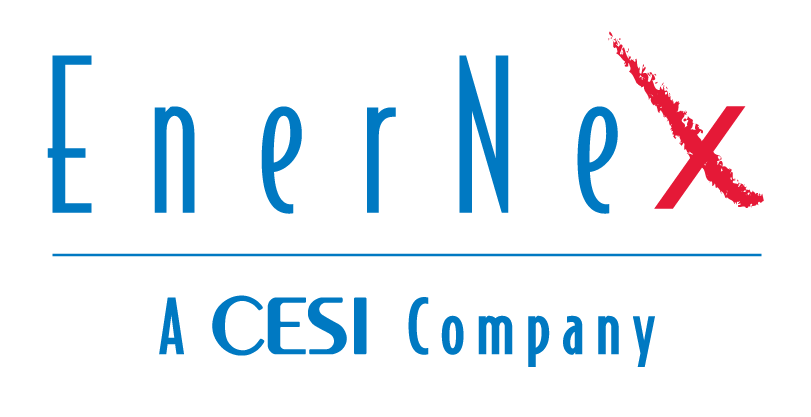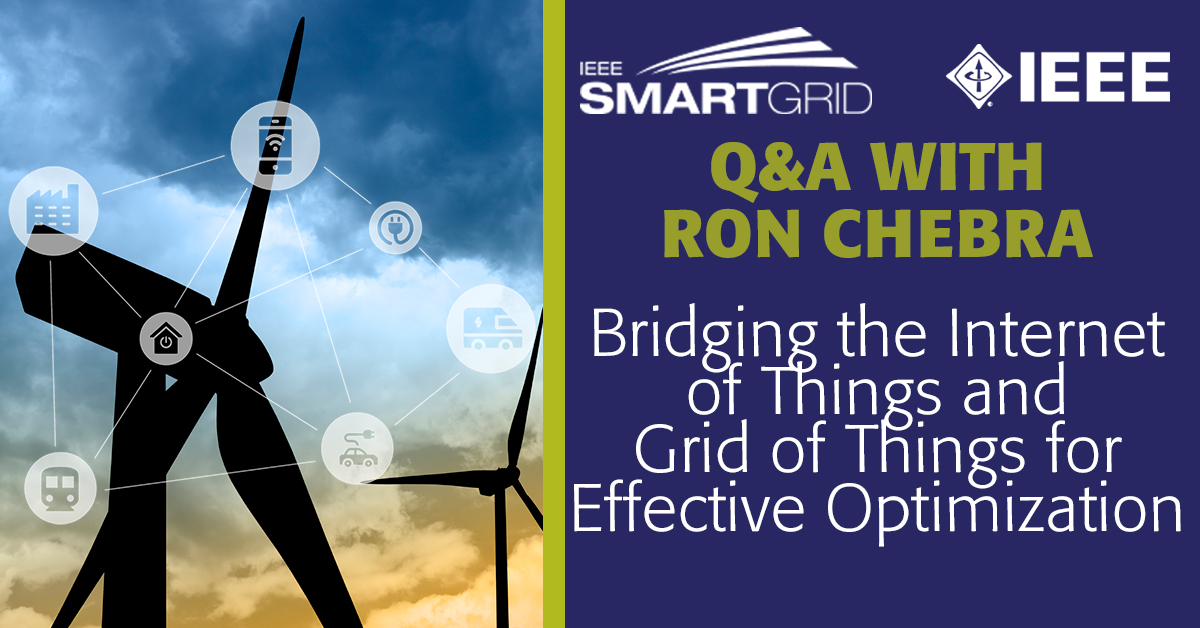Ron Chebra, EnerNex Vice President of Grid Modernization, is a recognized thought leader and industry expert in utility modernization. He has deep operating knowledge in technology solutions in areas such as MicroGrids, Renewable Energy Integration, Smart Grid, Distribution Automation (DA), Advanced Metering Infrastructure (AMI) and Demand Response. He provides strategic consulting services to leading energy organizations and to industry suppliers of products and services in the following areas: MicroGrids, demand response, battery energy storage solutions and “Behind the Meter” technologies. He is frequent contributor to leading industry journals and for the past 2 years, he has been the Chairman of the Smart Cities/Iot Track for Distributech. Ron has over 35 years of experience, including previous positions with Verizon Enterprise Solutions, Schneider Electric and DNV GL.
In this interview, the Ron answers questions from his webinar, Bridging the Internet of Things and Grid of Things for Effective Optimization, originally presented on June 6, 2019. For more details regarding these questions, please view his webinar on-demand on the IEEE SG Resource Center.
Are there opportunities for utilities to generate revenue from leveraging any existing communications infrastructure?
Each case may need to be examined from the perspective of how the infrastructure was paid for. For utilities that are regulated and where the asset was paid for by rate recovery mechanisms this may be more difficult to leverage. In areas where this is not an issue then appropriate methods must be undertaken to properly quantify the value. For instance, there is a precedent where fees were charged for pole attachments for telecommunications and cable services. Certainly, as we see the growth of small cells in a 5G Wireless environment, there is a possibility of leveraging not only the pole space but some of the services that can be transported over this infrastructure.
How would the grid and customer systems be balanced? And who would have control? What is best for the utility is not always best for the customer? Who would ensure the customer needs are serviced fairly?
There is a level of reliability and service capability that must be provided by the utility. Safety is paramount, if turning off a customer’s asset is required to ensure the well-being of a lineman than there should be no question about priority. Other less definitive cases, such as trimming back individual customer PV production to ensure the integrity of the feeder has implications both for the utility and their requirements (e.g. overvoltage) and the customer (reduced local production). Many of these conditions are covered in the interconnection agreements; however, this is an issue that many public service commissions are examining to ensure fair treatment of all parties.
IOT wasn’t designed with cybersecurity in mind. Are there other options other than IOT that can be used, in your opinion?
There has been a lot of interest in cyber security measures with regard to IoT. Last year, in September of 2018, California enacted CA SB 327, It covers a broad cybersecurity governance over IoT devices. This law mandates that any maker of an Internet-connected, or “smart,” device ensure the gadget has “reasonable” security features that “protect the device and any information contained therein from unauthorized access, destruction, use, modification, or disclosure.” A manufacturer of a connected device shall equip the device with a reasonable security feature or features that cover all of the following:
- Appropriate to the nature and function of the device.
- Appropriate to the information it may collect, contain, or transmit.
- Designed to protect the device and any information contained therein from unauthorized access, destruction, use, modification, or disclosure.
- Subject to all of the requirements of subdivision (a), if a connected device is equipped with a means for authentication outside a local area network, it shall be deemed a reasonable security feature under subdivision (a) if either of the following requirements are met:
- The preprogrammed password is unique to each device manufactured.
- The device contains a security feature that requires a user to generate a new means of authentication before access is granted to the device for the first time.
In March of this year senator Mark Warner, (D-VA) introduced Senate Bill S.734 that covers a physical object that is:
- Capable of connecting to and is in regular connection with the Internet
- Has computing processing capability that can collect, send or receive data, and
- Is not a general-purpose computer device, including a PC, smart mobile device, PLC or mainframe
- NIST is to be responsible to ensure managing IoT cyber security risks, especially regarding capabilities of IoT devices, and that
- NIST publishes guidance on policies and procedures for reporting, coordinating, publishing and receiving information about
- Device vulnerability and resolution
- Alignment with ISO Standards 29147 and 30111
What are the key connective security concerns for IoT and GoT?
Ensuring the protective measures that provide assurance of information in place both for data in transit and data at rest. Encryption of sensitive information is essential, safeguarding that only authorized and authenticated access is granted to trusted entities. While “air gapping” applications may have worked in the past, the need for a greater level of access across the enterprise is growing in magnitude. Maintaining a clear delineation of systems of record and control is essential to maintain a level of cyber assurance.
Often, because of the levels of access that may be required ranging from central operations to field crews, maintaining a set of strong passwords that is uniformly managed and administered is required.
What will be the predominant communication standard in the Grid of Things? Will it be wired or wireless?
With the proliferation of digital cellular services and the reliance that many industries have placed on this infrastructure, one would lean toward wireless as the predominant standard; however, there is still a strong play for wired services when and where these can reasonably be deployed.
With much lower powered sensors and wireless modems, packages that contain both of these that often can be provisioned with small solar cells and battery backup, there is a new ability to place more things in the field.
What is the importance of cyber physical systems in grid of things perspective?
Cyber physical protection will always remain an important factor; given the fact that in more cases the deployment of IoT will be in remote and unmanned locations, limiting access to these assets will continue to be a need and a challenge.
What do you think is the future of linking home applications to utility needs, e.g. being able to optimize energy usage based on a time of day tariff?
A few years ago, under the American Recovery and Reinvestment Act of 2009, a number of pilots were conducted wherein smart communicating thermostats were given to customers who participated in demand response programs. In addition to these customer, there were a number of customers who were given in home display units that showed the user their real time energy consumption. Customers participating in demand-side management programs piloted at 10 utilities that participated in Consumer Behavior Studies reduced their peak demand by up to 23.5 percent, with annual savings for customers ranging from $5 to more than $500, depending on the type of rates offered. https://www.smartgrid.gov/files/Final_SGIG_Report_20161220.pdf
Does IOT need to fundamentally change the present structure of the power grid? Will this be practical in relation to the costs involved?
IoT will more than likely significantly change the interaction of the customer and the grid. Transforming a customer from simply a recipient of energy delivery to a responsible interactive role as a prosumer will be enabled by smart devices, connectivity to the larger environment, and a growing level of more intelligence. Today a majority of users are computer savvy, own smart phones and find a great comfort setting up conditions that suit their lifestyle. Being able to set up rules that are based on comfort, economics and convenience is how the grid will transform.
As far as costs, we are at the verge of sophisticated maturity with more options that are driving costs down. The grid is also transforming, using smarter devices at the edge, increasing machine intelligence, and greater levels of management and control.




